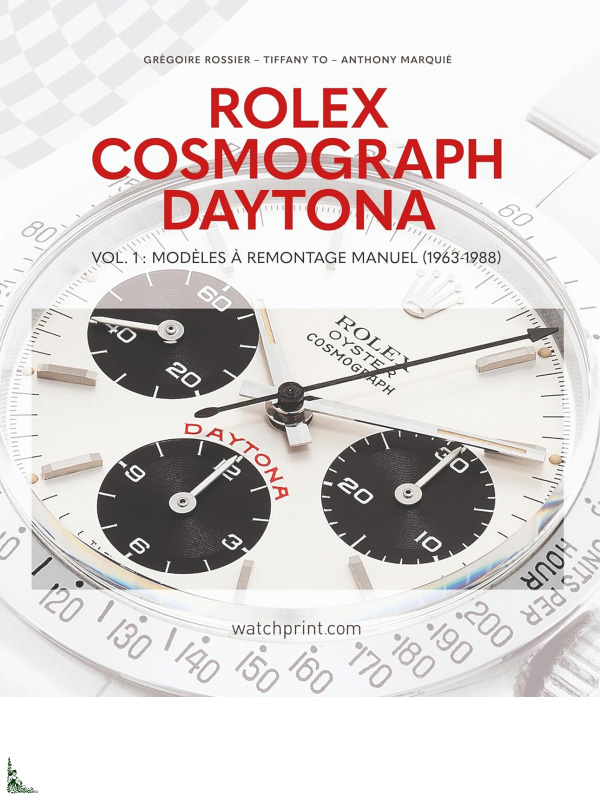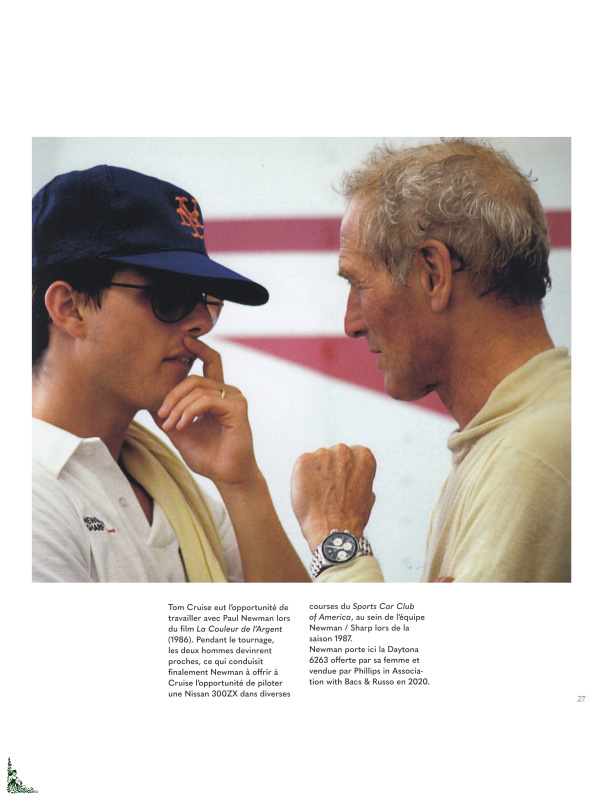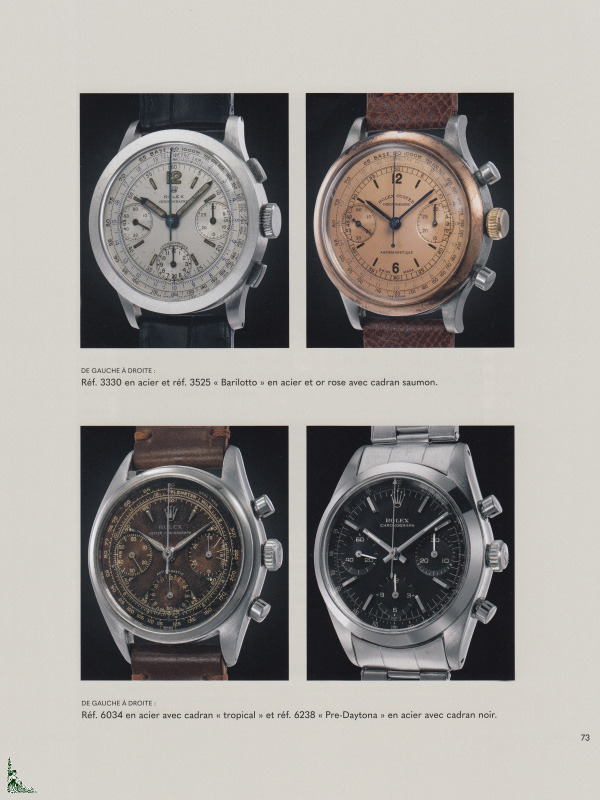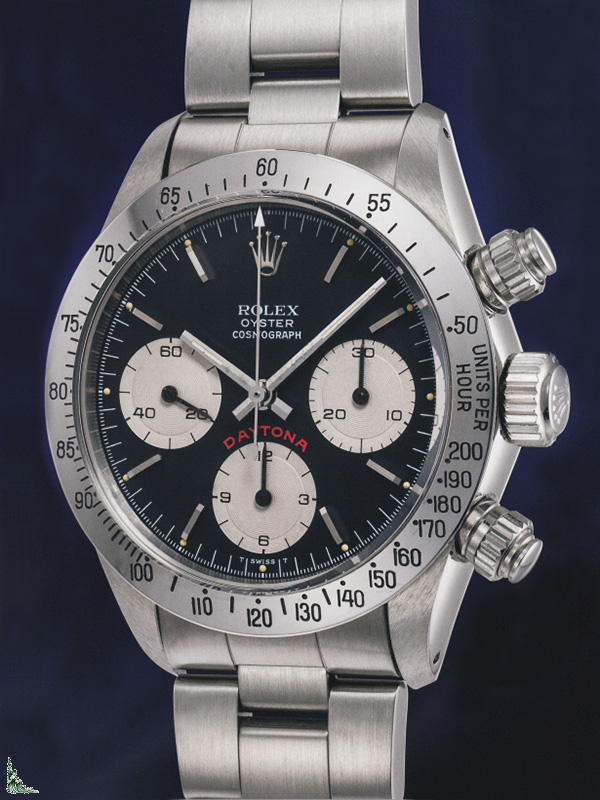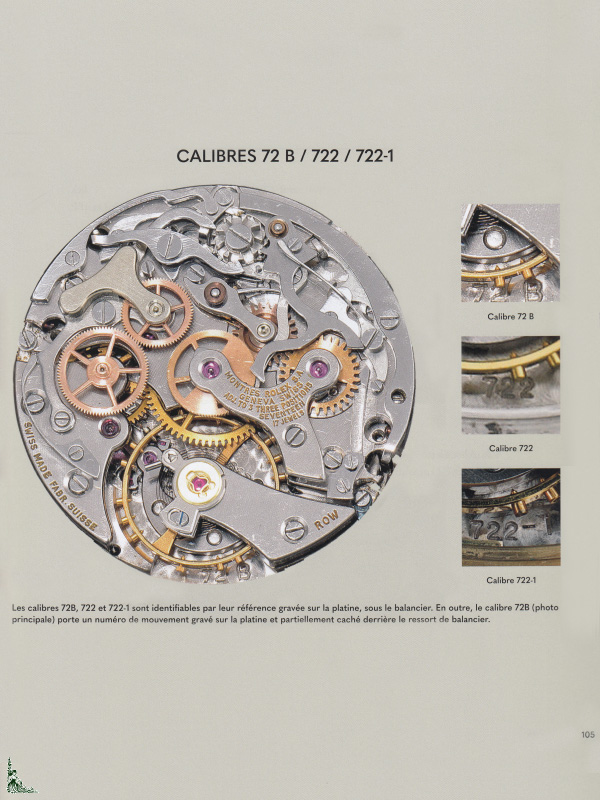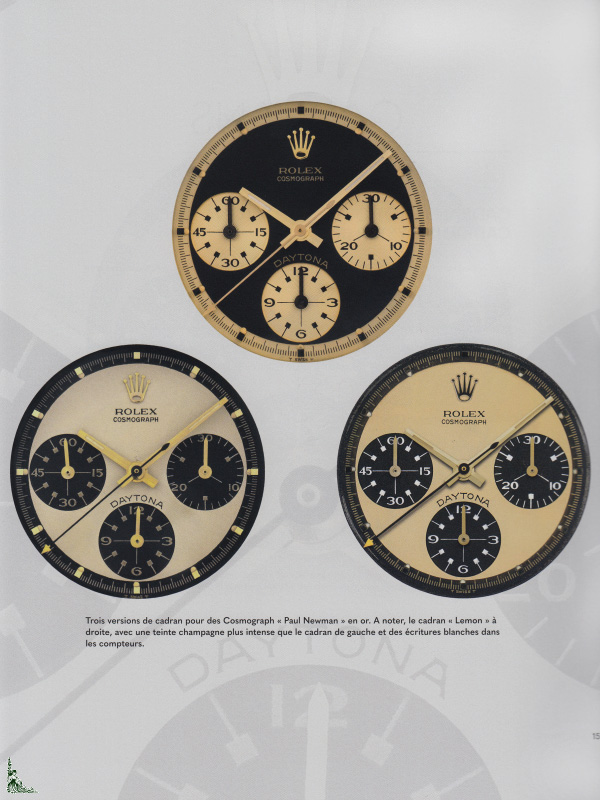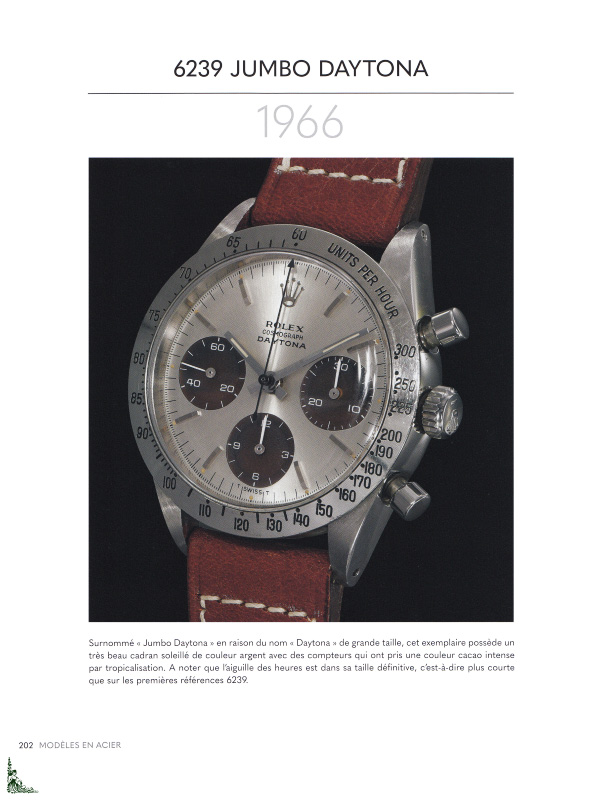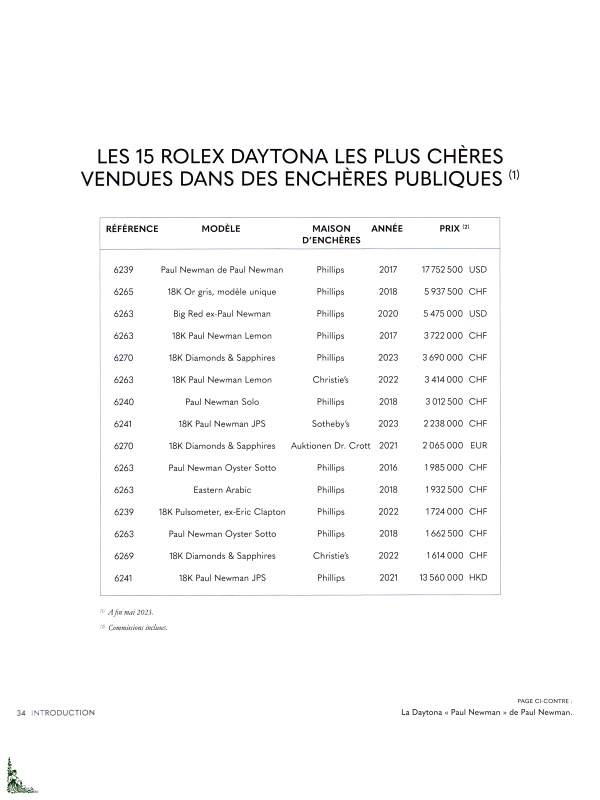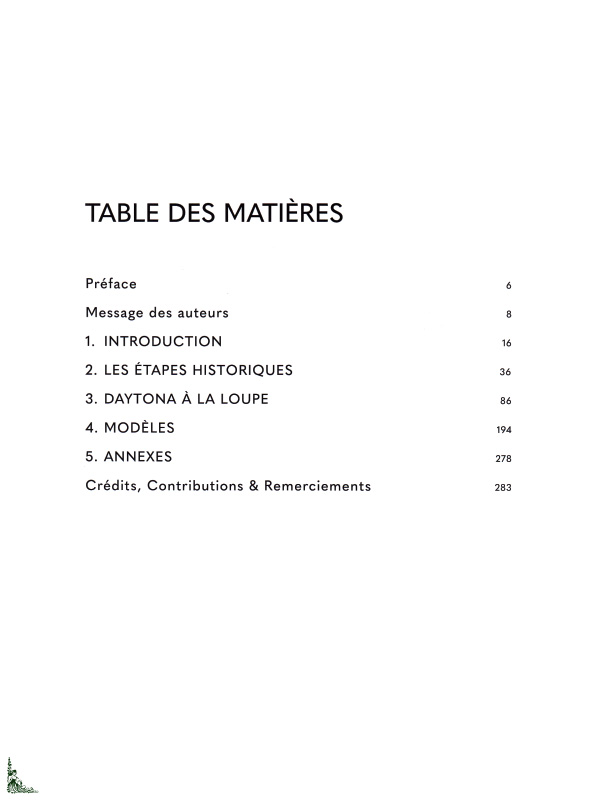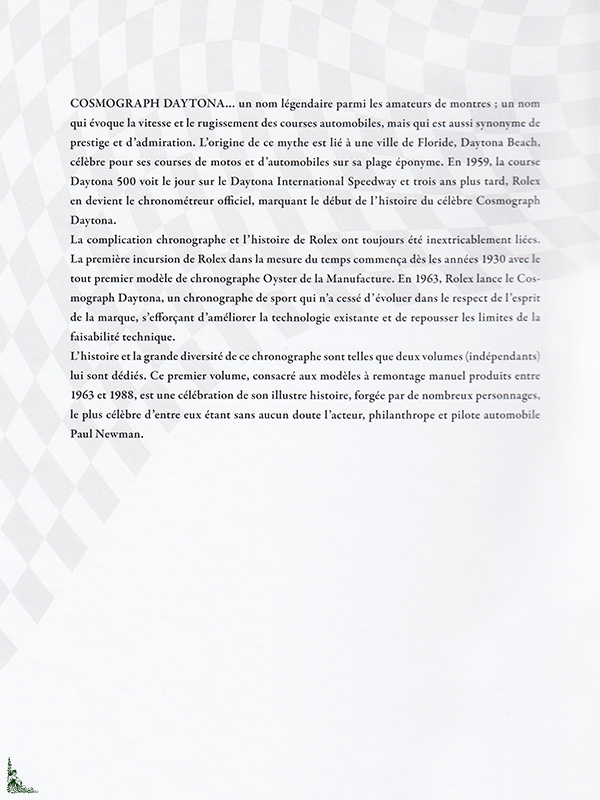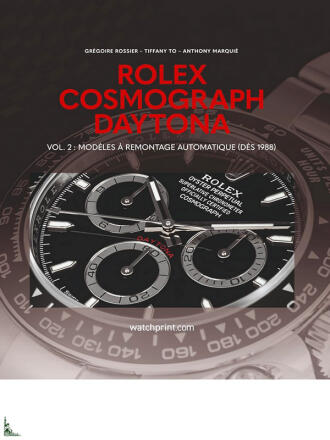Rolex Cosmograph Daytona Vol. 1 : Manual winding models (1963 - 1988)
Buchinformationen
| Autoren : | Grégoire Rossier & Anthony Marquié |
| Herausgeber : | Watchprint (2023) |
| Bindung : | Hardcover (286 full color pages) 9-½ inches x 11 inches |
| Sprache : | French |
| ISBN : | 978-2-940506-54-5 |
| EAN : | 9782940506545 |
Beschreibung
Rolex Cosmograph Daytona Vol. 1 : Manual winding models (1963 - 1988), by G. Rossier and A. Marquié, Ed. Watchprint, 9-½ inches x 11 inches ( 24 cm x 28 cm ), hardcover book with 286 full color pages
This hardcover book with 286 color pages presents the COSMOGRAPH DAYTONA watch from ROLEX.
COSMOGRAPH DAYTONA... a legendary name among watch enthusiasts, a name that evokes the speed and roar of motor racing, but is also synonymous with prestige and admiration. The origin of this myth is linked to a city in Florida, Daytona Beach, famous for its motorcycle and car races on its eponymous beach. In 1959, the Daytona 500 race began at the Daytona International Speedway and three years later, Rolex became the official timekeeper, marking the beginning of the history of the famous Cosmograph Daytona.
The chronograph complication and the history of Rolex have always been inextricably linked. Rolex's first foray into time measurement began in the 1930s with the Manufacture's very first Oyster chronograph model. In 1963, Rolex launched the Cosmograph Daytona, a sports chronograph that has continued to evolve in keeping with the spirit of the brand, striving to improve existing technology and push the boundaries of technical feasibility.The history and great diversity of this chronograph are such that two (independent) volumes are dedicated to it.
This first volume, devoted to hand-wound models produced between 1963 and 1988, is a celebration of its illustrious history, forged by many characters, the most famous of these undoubtedly being the actor, philanthropist and racing driver Paul Newman.
Vontents:
- Foreword
- Message from the authors
- 1 / Introduction
- 2 / Historical stages
- 3 / Daytona under the microscope
- 4 / Models
- 5 / Annexes
The French texts are written by Grégoire Rossier and Anthony Marquié.
 Description française
Description française
Rolex Cosmograph Daytona Vol. 1 : Modèles à manuel (1963 - 1988)
Détails du livre
| Auteur : | Grégoire Rossier & Anthony Marquié |
| Éditeur : | Watchprint (2023) |
| Reliure : | Relié (286 pages couleurs) 24 cm x 28 cm ( 9-½ inches x 11 inches ) |
| Langue(s) : | Français |
| ISBN : | 978-2-940506-54-5 |
| EAN : | 9782940506545 |
Description
Rolex Cosmograph Daytona Vol. 1 : Modèles à remontage manuel (1963 - 1988), de G. Rossier et A. Marquié , Ed. Watchprint, 24 cm x 28 cm, relié avec 286 pages couleurs
Cet ouvrage relié avec 286 pages couleurs présente la célèbre montre COSMOGRAPH DAYTONA de ROLEX.
COSMOGRAPH DAYTONA... un nom légendaire parmi les amateurs de montres , un nom qui évoque la vitesse et le rugissement des courses automobiles, mais qui est aussi synonyme de prestige et d'admiration. L'origine de ce mythe est liée à une ville de Floride, Daytona Beach, célèbre pour ses courses de motos et d'automobiles sur sa plage éponyme. En 1959, la course Daytona 500 voit le jour sur le Daytona International Speedway et trois ans plus tard, Rolex en devient le chronométreur officiel, marquant le début de l'histoire du célèbre Cosmograph Daytona.
La complication chronographe et l'histoire de Rolex ont toujours été inextricablement liées. La première incursion de Rolex dans la mesure du temps commença dès les années 1930 avec le tout premier modèle de chronographe Oyster de la Manufacture. En 1963, Rolex lance le Cosmograph Daytona, un chronographe de sport qui n'a cessé d'évoluer dans le respect de l'esprit de la marque, s'efforçant d'améliorer la technologie existante et de repousser les limites de la faisabilité technique. L'histoire et la grande diversité de ce chronographe sont telles que deux volumes (indépendants) lui sont dédiés.
Ce premier volume, consacré aux modèles à remontage manuel produits entre 1963 et 1988, est une célébration de son illustre histoire, forgée par de nombreux personnages, le plus célèbre d'entre eux étant sans aucun doute l'acteur, philanthrope et pilote automobile Paul Newman.
Principaux chapitres de l'ouvrage :
- Préface
- Message des auteurs
- 1 / Introduction
- 2 / Les étapes historiques
- 3 / Daytona à la loupe
- 4 / Modèles
- 5 / Annexes
Les textes en Français sont de Grégoire Rossier et Anthony Marquié.


